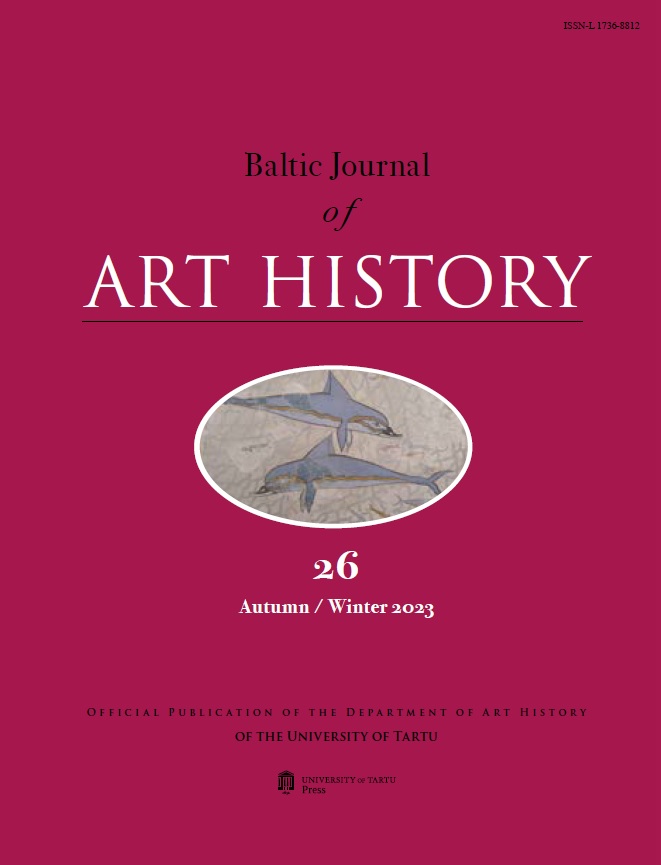Domenico Trezzini’s Imperial Gate in Narva
DOI:
https://doi.org/10.12697/BJAH.2023.26.02Keywords:
Domenico Trezzini, Peter I, Narva, The Peter and Paul Fortress of Saint Petersburg, Baroque Fortress Gates, Allegorical sculpturesAbstract
Before the devastation of the Second World War, the well-preserved historic city Narva, on the eastern border of the Republic of Estonia, was known as a pearl of late 17th century Swedish Baroque architecture. The development of the most promising economic and administrative centre of the Kingdom of Sweden in the eastern part of the Gulf of Finland was halted as a result of the Great Northern War. However, after the bloody and destructive siege of 1704, there was a short period in which Peter I tried to highlight Narva as his victory trophy, which was to undo the disgrace of his previous defeat in the Narva battle of 1700, resulting in several construction projects (for example the house, or “palace”, of the Tsar himself and the remodelling of one of the churches into the orthodox cathedral).
According to the personal testimony of Domenico Trezzini, famous first architect of St Petersburg, his first work in Russia was the city gates in Narva. Letters exchanged between construction project leader Ulyan Senyavin and governor general Alexander Menshikov confirm that the “architect from St Petersburg” was heading the construction of the city gates at least in 1705. Moreover, Peter I probably personally revised the design for the sculptural programme, demanding the figure of Paul the Apostle be set above the gates. The citations of these and other relevant sources were published by the recent biographer of Trezzini Konstantin Malinovsky, attracting the attention of the author of the present paper. Partly because of misinterpretations of earlier Russian authors Malinovski did not manage to reach a conclusion as to whether it was a temporary triumphal arch in the place of the breach, or a real city gate, and if so which gate.
In the Russian State Military Historical Archives in Moscow, among a full set of drawings documenting the fortifications of Narva as of 1728, i.e. shortly after the Great Northern War, there is also one sheet dedicated to the Emperor´s Gate that surprises with its rich sculptural decoration. During the Swedish era the new gate designated for the same location, in between the bastions of Gloria and Honour, was to be called the King´s Gate. Despite the opinion of the eminent Swedish art historian Sten Karling that this gate was built of stone before the 1704 siege, a closer look at the Swedish fortress plans (especially that of 1703 found only recently) makes it highly improbable. It is quite likely that the gate was made by Trezzini out of carved stones collected on the site before the war, which might explain the close resemblance of its architecture to the earlier Swedish fortress gates, especially Karl´s Gate in Riga. The Emperor´s Gate on its own became the prototype for Peter´s Gate at the Peter and Paul Fortress in St Petersburg, as Peter I himself ordered it to be made “resembling the one in Narva”, although the gate itself was throned by St Peter, another of Peter I spiritual patrons. Trezzini, as is now clear, took over almost all the sculptural décor from Narva, expanding on it. The symbolic meanings of the statuary, here only covered at the most basic level, are ripe for further discussion.

